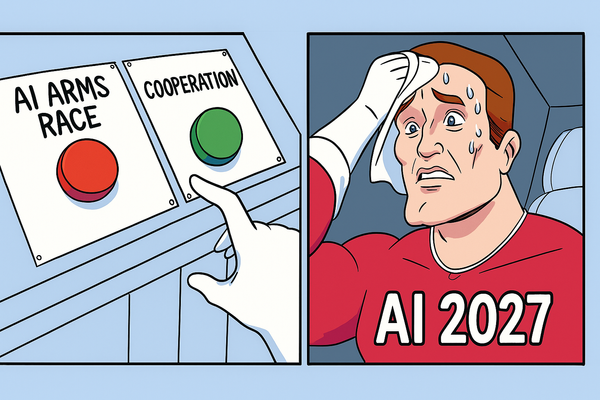Crafting a Winning Product Strategy: Competing with Microsoft Word

Creating a tech-powered product strategy requires understanding customer needs at a fundamental level. In this article, we’ll explore how you can strategically position your product to compete with a giant like Microsoft Word. Specifically one of their dominant products: Microsoft Word. Microsoft has a market cap of around a trillion dollars, and their Office suite is a major part of their business. But how would you create a product strategy to beat Microsoft Word?
Is It Possible to Envision a World Without Microsoft Word?
Thinking about overtaking Microsoft Word requires imagining a future where word processors might not be necessary. Just as typewriters became obsolete 40 years ago, technology and market evolution could lead to a similar fate for word processing applications.
What is Jobs-to-be-Done Innovation Theory?
The foundation of jobs-to-be-done innovation theory is that customers aren’t buying products like typewriters or word processors. They hire these tools to get a job done. While it might seem like the job is to create documents, we need to dig deeper to understand the true goals customers are trying to achieve with word processors.
What Are the Key Questions in Jobs Theory?
To formulate a product strategy against Microsoft Word, we need to address six main questions:
- Who is the actual customer?
- What market are we targeting?
- How big is the market?
- What segment of the market should we target?
- What are the unmet customer needs?
- What is the product idea and its value for the customer?
Who Are the Customers for Microsoft Word?
Microsoft Word is used by a wide range of people, including attorneys, authors, marketing professionals, business professionals, screenwriters, consumers, and financial professionals. Each group uses Word for different purposes, from creating legal documents to writing books and business memos. Understanding these varied uses helps us see that the job isn't just to create documents but to achieve broader goals like conveying ideas or resolving disputes.
What Is the Core Job Customers Are Trying to Achieve?
To define the market accurately, we must focus on the customers' core functional jobs, emotional jobs, and consumption jobs. For example, attorneys use Word to resolve disputes, while authors use it to convey ideas. Emotional jobs involve how customers feel about using the product, like wanting to feel confident and less anxious. Consumption jobs include how users interact with the product, such as learning, installing, and maintaining it.
How Should We Look at the Market Without Solutions?
Looking at the market through the lens of solutions like document collaboration can be misleading. Instead, we should focus on the broader goals. For instance, Google Docs and Dropbox Paper are also trying to help users collaborate on documents. But defining our market by these solutions can limit our understanding and innovation.
Why Is It Important to Separate Job Beneficiaries from Job Executors?
In many markets, the job beneficiary (the person who benefits from the job being done) and the job executor (the person who executes the job) are different. For instance, a business executive hires an attorney to resolve a dispute. The attorney (executor) uses Word to create legal documents, but the executive (beneficiary) is the one needing the dispute resolved. This distinction is crucial for identifying the real market.
How Big Is the Market for Resolving Disputes?
By focusing on the job of resolving disputes, we can see that the market is enormous. In the U.S. alone, business disputes represent a $200 billion market. This is significantly larger than the $15 to $20 billion market for word processors. This shows the importance of defining the market by the job to be done, not by existing products.
What Are the Segments Within the Market?
Segmentation helps identify groups of customers who struggle more than others. For example, while large companies might have more resources for resolving disputes, smaller businesses might struggle more and be willing to pay for better solutions. Understanding these segments helps prioritize unmet needs.
What Are the Unmet Needs in Resolving Disputes?
Unmet needs are the variables that can make or break the job. For resolving disputes, these might include determining the relevant law, gathering information, calculating costs, and predicting the probability of success. These needs must be addressed better than the current solutions.
What Product Ideas Could Satisfy These Unmet Needs?
To compete with Microsoft Word, we could develop a product that uses advanced algorithms including AI/ML to predict the outcome of disputes more accurately than attorneys can. This product could gather and analyze vast amounts of legal data to provide better insights at a lower cost, making it a valuable tool for business executives.
How Can We Target Other Customer Types?
While resolving disputes is one example, the same process can be applied to other customer types using Microsoft Word. Screenwriters, authors, and business professionals each have specific jobs to be done. By understanding these jobs and unmet needs, we can develop targeted products that offer better solutions.
Conclusion: How Do We Beat Microsoft Word?
Competing with Microsoft Word requires a deep understanding of the jobs customers are trying to get done. By focusing on these jobs and identifying unmet needs, we can develop innovative solutions that offer better value. This approach not only helps us create a competitive product strategy but also reveals new market opportunities beyond traditional word processing.





